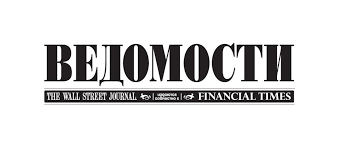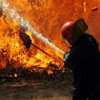In the last module, , we looked at the importance of planning ahead and organising resources in order to ensure a steady flow of high-quality, focussed output.
This module, 'Issue-led journalism' goes a step further and looks at the role of the forward planning editor.
This role, and what the forward planning editor is expected to deliver, will have been discussed and agreed at a much higher level. (See module on ).
Defining an issue-led journalism strategy
Gather the senior editorial team together and decide what are the key issues concerning your audience.
You will probably find it boils down to jobs, housing, health, education, transport, law and order. the environment, etc. (I have carried out this exercise in Central America, the Middle East, SE Asia and the CIS and there is a great similarity in the issues that worry ordinary people.)
Once agreed, these form the key issues for your issue-led journalism strategy.
So, let's say we end up with six issues…
- Jobs (finance and the economy)
- Housing
- Health
- Education
- Crime (law and order)
- Environment.
Note that politics and corruption are not listed as key issues, despite being suggested as such almost every time I have carried out this exercise. This is because politics and corruption can impact all the areas mentioned above and are common to all, rather than issues or topics in their own right.
Covering the issues that concern your audience
Now we need to break down each issue into topics, preferably six topics on each.
Take health, for example. Depending on the area and the priorities, typical topics might be HIV, TB, cancer, malaria, malnutrition, heart disease.
Regional differences weigh heavy here and the topics are less easy to predict.
Do the same exercise with your senior editorial team until you have six topics for each of the six key issues.
Now we need to break it down one step further.
We need to dig deep for the stories about these topics that help people understand the issues and encourage the authorities to address the audience’s concerns.
Stories about real people tackling real issues
We need real stories about real people on each topic. Ideally three stories for each topic.
This is not as hard as it sounds. You’ll be surprised, or perhaps not, at how many stories your team are aware of and can tap into.
Take HIV, for example. There might be a story about stigma, one about exclusion, another about the lack of available drugs, another about fake drugs.
By the end of this exercise you should have at least four stories on each topic.
In the model above (carried out in Baku, Azerbaijan) you will see that the exercise produced 270 original story ideas. Because they are not one-off stories and will be followed up at least once a year, this comes to 540 original stories — more than ten a week.
 These are part of your editorial strategy to provide issue-led journalism that informs the public debate so that your audience can make educated choices.
These are part of your editorial strategy to provide issue-led journalism that informs the public debate so that your audience can make educated choices. 
These are part of your editorial strategy to provide issue-led journalism that informs the public debate so that your audience can make educated choices.
This is responsible journalism. And it is clever journalism, too, because, if you audience feels you are covering the issues that matter most to them, they are more likely to stick with you.
Becoming a news leader
Now the fun starts. You will soon start to set the news agenda (rather than having it set for you, as before).
Your competition will be forced to follow up on the stories you have discovered. By the time they do, you will be breaking a new story. And on it goes.
Once you have decided to deliver issue-led journalism there will be no stopping you. You will be the agenda-setters.
Please click on the links below for more modules in the .
| Related Items |
|---|
|
|
Forward planning for journalists |
| — | |||
| By | |||
|
It could be that the majority of the news you cover on any given day is directly or indirectly controlled by others. A simple forward planning strategy, based on original, , can reverse this. What stimulates your news agenda?There are typically ten sources of news:
Too many media organisations depend on the first five sources. A responsible media organisation that exists to inform the public debate with thorough, balanced, objective and accurate journalism will spend more time investing in the the last four sources. It is worth carrying out a quick analysis of what prompts or stimulates your news calls. The result might make uncomfortable reading. I have carried out this simple test with several news organisations in recent years and the results are sobering. Taking control of your news agendaI asked colleagues who have worked at three of the major global broadcasters about the percentage breakdown for the news sources listed above. Averaged out between the three it revelead the following news source dependencies:
An externally stimulated news agendaAs the pie chart below shows, this means that 89% of the news agendas are stimulated, prompted or inspired by others and only 11% of the news is original. 
An externally stimulated news agenda — source Media Helping Media
An original journalism led news agendaThe challenge, for all news organisations whether they are global broadcasters or local newspapers, is to reverse this and take control of the news agenda by increasing the amount of original journalism. The pie chart below shows what news organisations should aim for. 
Original journalism led news agenda — source Media Helping Media
The forward planning editorThe first step is to set aside resources for forward planning. This doesn't mean hiring new staff. It will mean reassigning some staff by taking them away from slavishly following the leads of others and, instead, encouraging them to invest their time in producing original, issue-led, investigative journalism that focuses on the needs of the target audience. The first position you need to fill is that of the forward planning editor. This person can do other tasks in the newsroom, and need not be dedicated solely to the task of forward planning, but this person will be the journalist who takes ownership of your forward planning news agenda. Their job is to set out what will be covered tomorrow, next week, next month and three months ahead. They attend all news meetings and must have a major say in what is covered. The person in charge of the day’s output needs to look to the forward planning editor to supply a large part of the day’s news coverage. You will then need to allocate resources to this forward planning effort. Forward planning resourcesIn the case of a TV station, the forward planning editor will need at least one reporter, a camera crew and the use of an editing suite. This is the hard bit, because prior to the setting up of your new forward planning effort these resources would be dedicated to news on the day and responding to the news agenda set by others (as set out above). Warning: It will take about three weeks before the efforts of the forward planning team start to percolate through; only then will the benefit of shifting news resources, usually used for covering the same news agenda as the competition, be evident. In the next module, 'Issue-led journalism', we will look at what the forward planning editor does and how they help manage the news brand's editorial focus and act as guardian of that brand. Note: You can discuss this on the and on the . Next module:
|
|||
Источник:

 Are you in control of your news organisation’s editorial agenda? You may think you are, but an examination of what prompts or stimulates your news calls may reveal some flaws in your news strategy.
Are you in control of your news organisation’s editorial agenda? You may think you are, but an examination of what prompts or stimulates your news calls may reveal some flaws in your news strategy.
 1 проголосовали
1 проголосовали Кто хочет стать универсальным журналистом? Присоединяйтесь!
Кто хочет стать универсальным журналистом? Присоединяйтесь! Открыта колонка для учебных записей. Ждем ваших публикаций!
Открыта колонка для учебных записей. Ждем ваших публикаций! Фонд независимого радиовещания: PODстанция приглашает на Ёлку Энтузиастов
Фонд независимого радиовещания: PODстанция приглашает на Ёлку Энтузиастов Александр Демченко: Как я делал слайд-каст
Александр Демченко: Как я делал слайд-каст Главные события Курска и Курской области от радио Сейм. Итоги 2009 года
Главные события Курска и Курской области от радио Сейм. Итоги 2009 года

 Альянс независимых региональных издателей: Подведены итоги конкурса «Лучший региональный сайт 2009″
Альянс независимых региональных издателей: Подведены итоги конкурса «Лучший региональный сайт 2009″ Новый проект «Би-Би-Си»: Зрители смогут выйти в интернет через телевизоры
Новый проект «Би-Би-Си»: Зрители смогут выйти в интернет через телевизоры Газета "Ведомости" на iPhone
Газета "Ведомости" на iPhone  "Эхо недели": В Железногорском районе в огне погибла пожилая женщина
"Эхо недели": В Железногорском районе в огне погибла пожилая женщина "Эхо недели": В Железногорске пройдут публичные слушания по проекту сервитута
"Эхо недели": В Железногорске пройдут публичные слушания по проекту сервитута ← Подпишись на RSS!
← Что такое RSS?
← Подпишись на RSS!
← Что такое RSS?
 ← E-mail рассылка
← E-mail рассылка
Комментарии